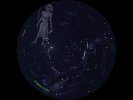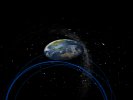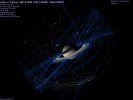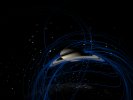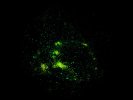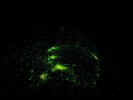
The MirrorDome Software are the tools you need to show content on the MirrorDome system. Swinburne also supplies planetarium software and sample content with the system.
Supplied Software
| Stellarium* | The popular digital orrery, Stellarium has been "warped" to make it suitable for projection on the mirror dome. The MirrorDome system also includes software updates as this product develops and evolves. More information |
| MDPlayer | A "warped" version of the Apple QuickTime player that plays any normal fisheye content, and warps the image on the fly to create the correct projection in the MirrorDome. Any fisheye content that works with the QuickTime Player (movies, images, VR Panoramics and Quartz Compositions) will work with MDPlayer. |
| Solar | A solar system simulator that allows you to interactively explore and explain all the aspects of the solar system. |
| Panodome | Project panoramic fisheye images, and interactively rotate them on the dome. |
| Simulations | A collection of cutting edge science simulation datasets that can be used to explain advanced concepts in astronomy. Developed by researchers at Swinburne's Centre for Astrophysics and Supercomputing. |
| Celestia * | A real-time 3D space simulation featuring a database of over 100,000 stars, nearly 100 solar system objects, and a complete catalogue of extrasolar planets. More information |
| * denotes software that is distributed under the GPL (Gnu Public License). The only differences between the standard versions of the these software packages and the ones we supply are some small optimizations so that the software works with the MirrorDome system. | |
Screen Shots
The following screen shots are taken directly from the MirrorDome software, running on an Apple MacBookPro. Fisheye and warped images are shown below. Click on each for an enlarged image.


